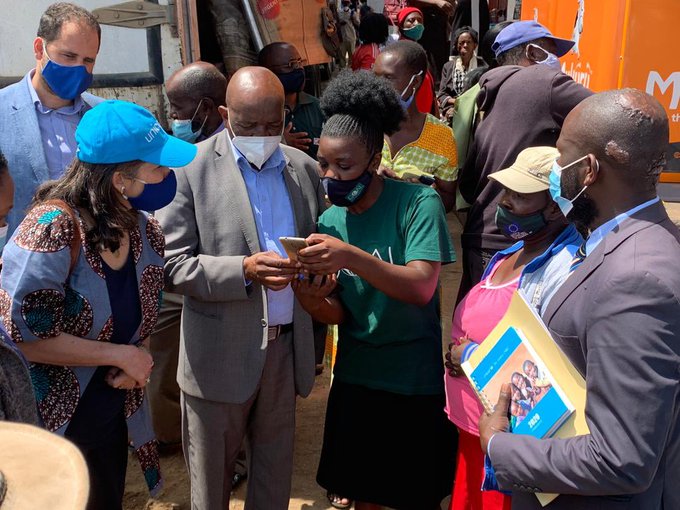The Integrated Food Security Classification (IPC) has reported that an increase in food insecurity in Zimbabwe is being driven by poor harvests, reduced income and high food prices but is partially mitigated by increased humanitarian food assistance.
Below, Spiked Online Media reproduces snippets from the report:
Current Situation Overview (Oct-Dec 2020)
Currently, 2.61 million people (27% of the analysed population) in rural Zimbabwe are facing high levels of acute food insecurity (IPC Phase 3), while nearly 2.9 million people (29%) are in Stressed (IPC Phase 2). Food insecurity is primarily due to shocks and hazards experienced in the country such as drought, reduced livelihood opportunities due to restrictions linked to COVID-19, pests, and diseases, and high food prices.
In the absence of large-scale humanitarian food assistance programmes currently ongoing in the country, more households would likely be in a worse-off food security situation. The Government and development partners are reaching large numbers of food-insecure households (4.1 million beneficiaries in the current period and 6.7 million beneficiaries in the projected period). There is a genuine need for these efforts to continue to reach the most vulnerable households and to provide them with food, cash and livelihood assistance.
The poor rainfall season experienced in most districts of Zimbabwe resulted in poor harvests, consequently resulting in low household food stocks from own production; a situation exacerbated by two previous consecutive poor-performing agricultural seasons. Compounded by the economic impacts of COVID-19, incomes were reduced.
For the majority of rural households, the most important income sources were casual labour, selling of livestock, and remittances. These were all negatively affected by COVID-19 restriction measures, resulting in household income reductions of more than 50%. This situation was exacerbated by sharp price increases and has forced many households to reduce expenditures on essential items and dispose of their assets.
PROJECTED SITUATION OVERVIEW (JANUARY – MARCH 2021)
During the period from January – March 2021, which is the peak of the lean season, it is estimated that 35% of the rural population (3.38 million people) will be facing high levels of acute food insecurity (IPC Phase 3). That is an increase of eight percentage points compared to 27% of the current analysis period. Meanwhile, 32% of the rural population (3.1 million people) will likely be in Stressed (IPC Phase 2). The significant proportion of the acute food insecure population is primarily due to shocks and hazards experienced in the country (drought, COVID-19, pests and diseases, high food prices, and limited food stocks).
In the absence of the large-scale humanitarian food assistance programme currently ongoing in the country, more households will likely slip into worse IPC Phases than the current classification. The projection is mainly driven by the continuing of humanitarian food assistance into the projection period. Low-income group households, such as small farmers and day labours, who mostly rely on food purchases will be at the highest risk of food insecurity.
RECOMMENDATIONS FOR ACTION
Response Priorities
Considering the high prevalence of acute food insecurity, there is an urgent need to scale up current food assistance to reduce food consumption gaps in the current period and protect/save livelihoods for the 2.61 million people in IPC Phase 3. Additionally, there is an urgent need to ensure that pledged humanitarian assistance to 6.7 million people in January to March 2021 period is confirmed and implemented, and those additional efforts are done to cover the 3.8 million people expected to be in IPC Phase 3 or above in the projection period.
In response to increased vulnerability, the Government and its development partners are encouraged to continue efforts to improve efficiency in the identification of beneficiaries through the establishment of electronic beneficiary databases to reduce double-dipping, for example.
Management of Food Aid: The Government should take far-reaching and monitorable actions to reform the way Zimbabwe receives and manages food aid. The management of food aid should be in-line with the “Paris Declaration on Aid Effectiveness,” particularly item 3(ii): increasing alignment of aid with partner country’s priorities, systems, and procedures and helping to strengthen their capacities.
Livelihood resilience: Rural livelihoods are under a lot of pressure due to the consecutive poor rainfall seasons and high prices of inputs, forcing households to engage in negative coping strategies that may be detrimental to their health and the environment. Emphasis should be placed on rebuilding rural livelihoods, such as through income diversification, household economic strengthening, and building productive community assets.
Crop Production: The Government should consider the importance and urgency of efforts to build resilience against climate variability and climate change amongst the rural populations of Zimbabwe. These efforts could include stepping up the promotion of climate-smart agriculture, water harvesting, and irrigation development, particularly in the most drought-prone areas.
Livestock Production: Livestock drought mitigation strategies need to be prioritized in areas that are prone to drought and where livestock production is the major livelihood strategy contributing to households’ livelihoods. The mitigation strategies could include: (i) Provision of subsidised livestock feeds and animal drugs; and (ii) Facilitation of access to relief grazing.
Income and Expenditure: Interventions that strengthen households’ economy and resilience are recommended to ensure households remain food and nutrition secure.
Shocks and Hazards: Government and development partners should consider broadening social protection and resilience-building programmes, in order to strengthen the absorptive and adaptive capacities of at-risk communities through scaling up of programmes such as Harmonised Social Cash transfers and Productive Community, Works targeting both labour and non-labour constrained households.
